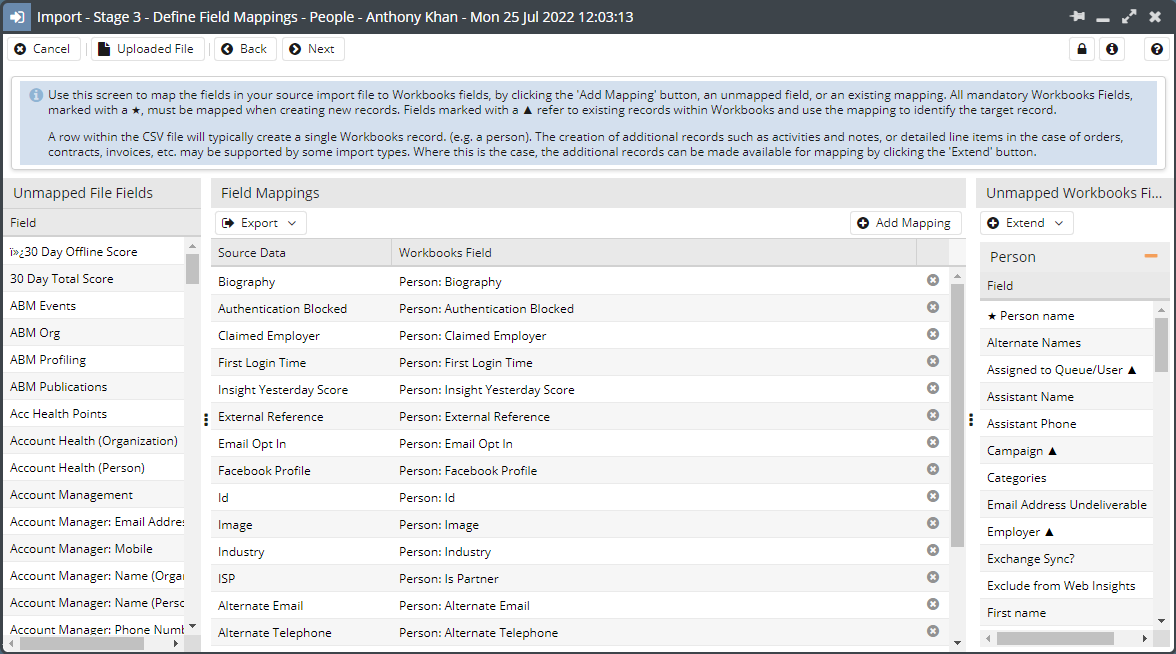When editing a form layout bear in mind that any sections that you set to be collapsible and 'initially hidden' cannot contain any mandatory fields. If the section does contain a mandatory field then ...
- Welcome to the Knowledge Base
- Introduction
- Training
- Getting Started
- Preferences
- Activities
- Cases
- Forecasts & Quotas
- Importing Data
- Leads
-
Marketing
- Introduction to Marketing
- Marketing Campaigns
- Mailing Lists
- Products
- Mailshots
- Upload Library
- Templates
- Event Management
- Compliance Records
-
Spotler Integration
- What is Spotler?
- Navigating your Spotler homepage
- GatorMail
-
GatorLeads / Web Insights
- Tracking Code
- Setting up the Plugin
- Viewing Web Insights Data on your Form Layouts
- Domain Names and Online Activities
- Reporting incorrect Leads created through Web Insights
- Reporting on Web Insights data
- Using UTM Values
- Why aren’t Online Activities being created in the database?
- Why is GatorLeads recording online activities in a foreign language?
- GatorSurvey
- GatorWorkflow
- GatorPopup
- Opportunities
-
Integrations
- Mapping
- Electronic Signing Tools
- Creditsafe Integration
-
Zapier
- Introduction to Zapier
- Available Triggers and Actions
- Linking your Workbooks Account to Zapier
-
Setting up Zaps
- Posted Invoices to Xero Invoices
- Xero payments to Workbooks Tasks
- New Case to Google Drive folder
- New Case to Basecamp Project
- New Workbooks Case to JIRA Ticket
- Jira Issue to new Case
- 123FormBuilder Form Entry to Case
- Eventbrite Attendee to Sales Lead and Task
- Facebook Ad Leads to Sales Leads
- Wufoo Form Entry to Sales Lead
- Posted Credit Note to Task
- QuickBooks Online
- Survey Monkey responses to Tasks
- Multistep Zaps
-
Email Integrations
- Email Dropbox
- Workbooks Exchange Server Sync
- Workbooks Outlook Connector
- RevenueGrid Intelligence and Engage
-
Event & Webinar Integration Tools
- GoToWebinar
- ON24
- Microsoft Office
-
Outreach
- Installation
- Outreach Authentication
- Sync People to Outreach Prospects
- Sync Organisations to Outreach Accounts
- Sync Workbooks Opportunities to Outreach
- Sync Tasks/Activities from Workbooks to Outreach
- Sync Outreach Sequences to Workbooks
- Sync Outreach Sequence States to Workbooks
- Sync Outreach Sequence Step Numbers to Workbooks
- Sync Prospects/Accounts/Opportunities from Outreach to Workbooks
- Sync Outreach Tasks/Calls/Meetings to Workbooks
- Scribe/Workbooks Connector
- RingCentral
- Auditing
- Comments
- People & Organisations
- Projects
-
Reporting
- Introduction to Reporting
- Using Reports
- Charts
- Exporting Reports
- Advanced Reporting
- Report Snapshots
- Dashboards
-
Transaction Documents
-
Introduction to Transaction Documents
- Displaying & Adding Transaction Documents
- Copying Transaction Documents
- Transaction Documents Fields Help
- Transaction Documents Line Items Help
- Printing & Sending Transaction Documents
- Managing Transaction Document Currencies
- Managing Transaction Document Statuses
- Setting a Blank Default Currency on Transaction Documents
- Credit Notes
- Customer Orders
- Invoices
- Quotations
- Supplier Orders
- Contract Management
- Sagelink
-
Introduction to Transaction Documents
- Auditing
-
Configuration
- Introduction to System Administration
- Users & Security
- Preferences
- Database
- Accounting
- Email & Integration
-
Customisation
- Creating & Modifying Picklists
- Theme
-
Record Types
- Creating Custom Fields
- Report-based Custom Fields
- Linked Fields & Reference Fields
- Record Templates
- Form Layouts
- Customising relationships between parties
- Opportunity Stages
- Custom Records
- Automation
- PDF Configuration
- Contact Support
- Releases & Roadmap
Import Templates
Import templates can be generated from Workbooks to help you import your data. An Import Template is a CSV or XLS file, with column headers that correspond to record form fields inside Workbooks, so when it comes to configuring the import mappings during the import, you will be working with a one-to-one mapping between source data and Workbooks form fields. Import Templates can be generated for any type of import, and also for imports of more than one record type such as People and Employer for example.
To generate an Import Template go to Start > Bulk Actions > Import > New Import Template.
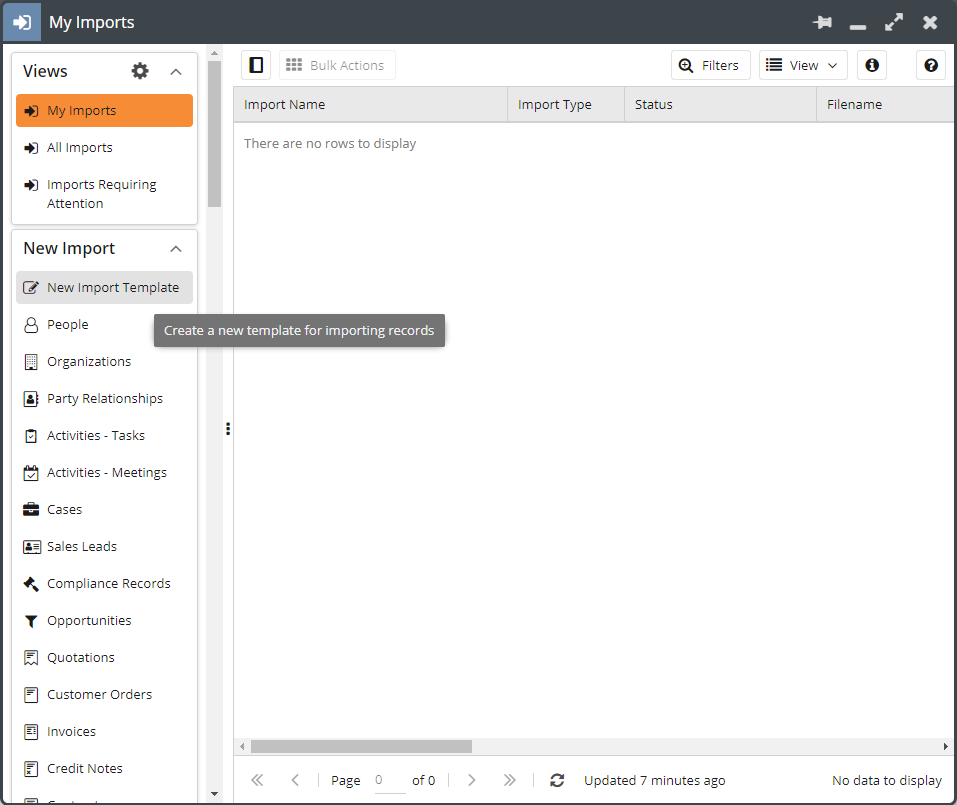
Select the Record type for the Import Template that you wish to generate. In this example, we will choose People.
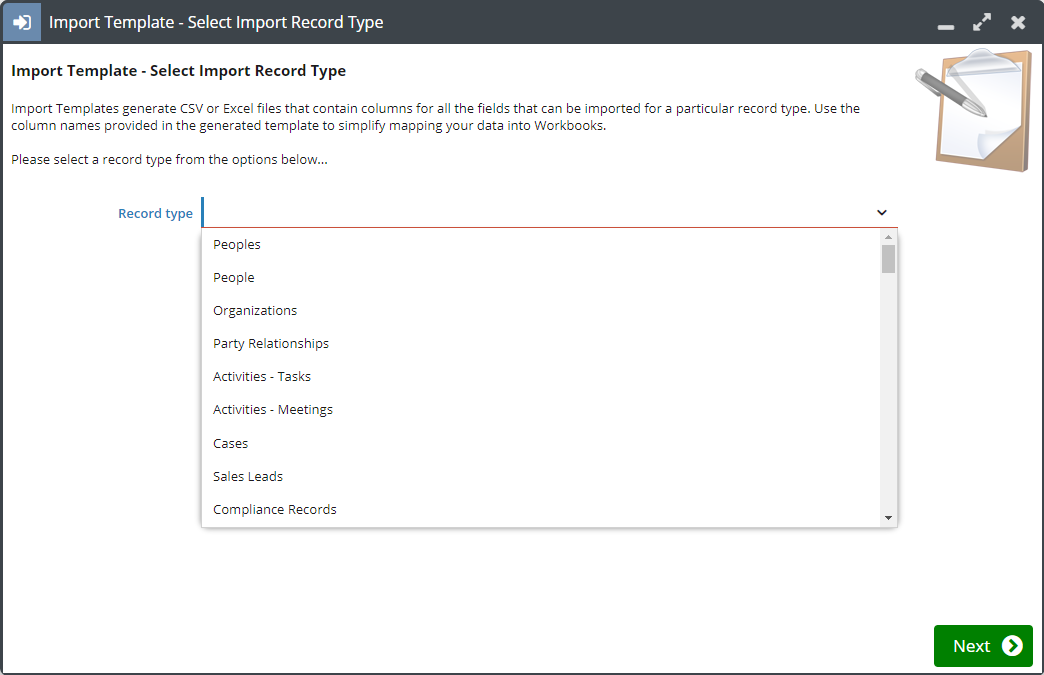
Imports can be extended to include other related record types and, in some cases, multiple records of the same type. The window below gives you to the option to choose any additional record types to include in the Import template. You can add multiple instances of each record type if required. This will simply add more columns in your Import Template.
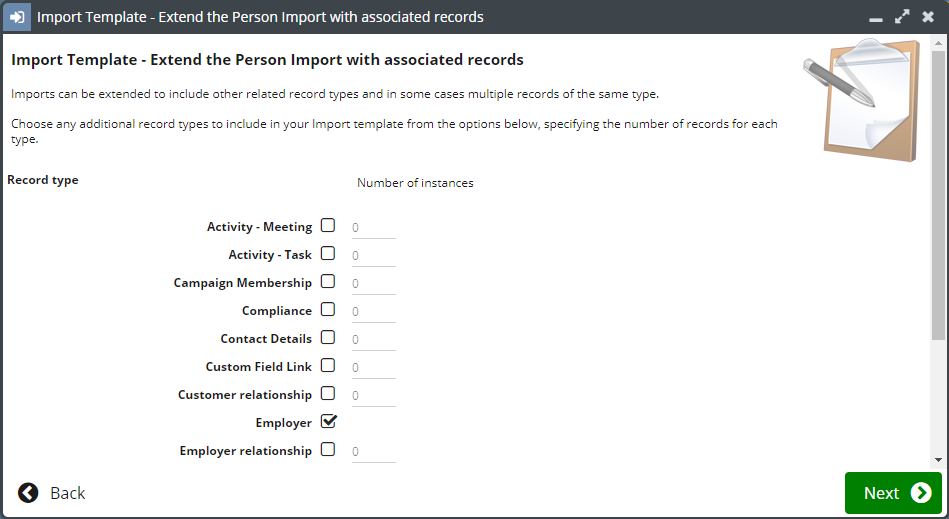
At the field mapping stage during Import, you can see how this list of options corresponds to the extended dropdown.
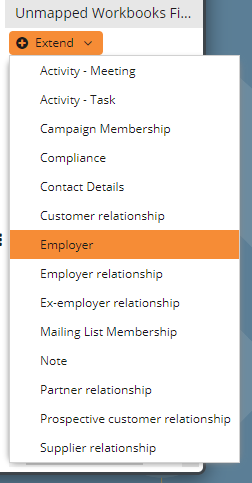
You may not wish for your Import template to contain all the fields available for that record type. At this stage, you can restrict the columns generated to only be those found in a particular form layout.
NOTE: The template will also include the standard reference columns Id, Object Ref and External Reference to enable unique identification when performing an update through import.
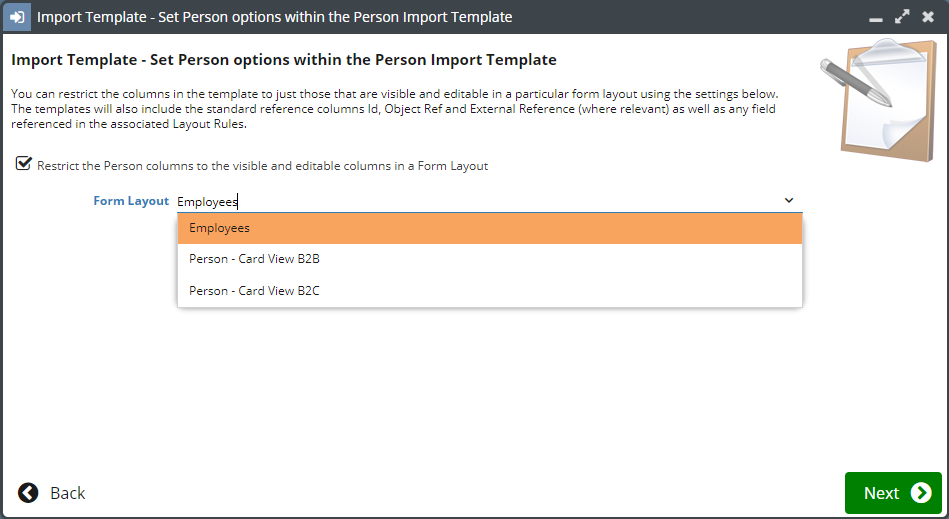
If you chose to extend to additional record types in the previous screen, you will also be able to restrict the columns based on their respective form layouts in the same way. The end result is your Import Template in a grid view - to export this to CSV or XLS click the Export button.
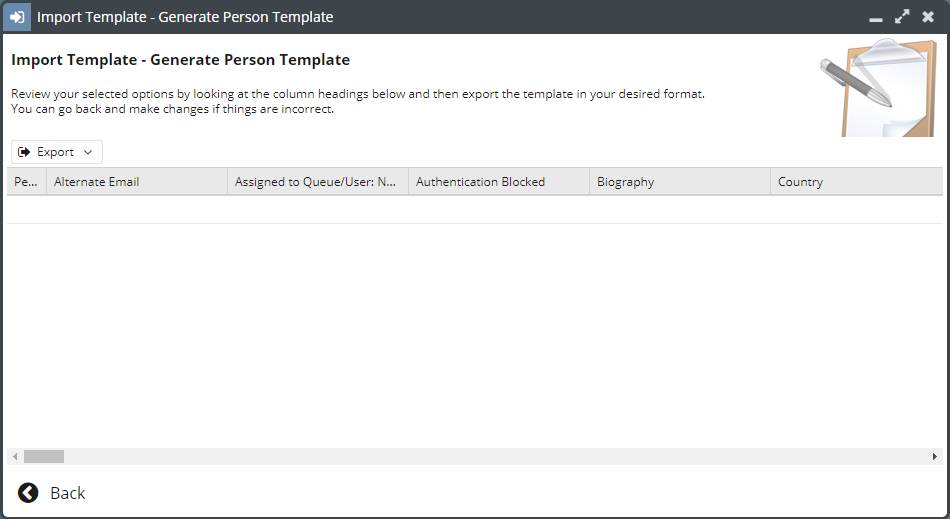
See how the generated template accounts for the extended record type by prefixing the column name with the respective record type.
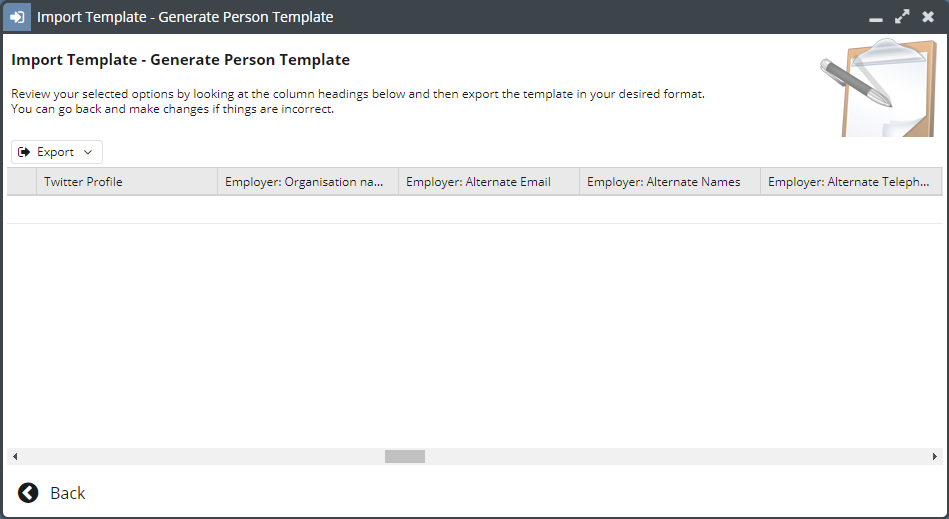
Your data can now be cleansed and manipulated to fit the Import Template structure for easy import. During your import, when you reach the Define Field Mappings stage, most mappings will be automatically be found for you because you have used the Import Template. However, you will still need to manually extend the import and map source data in order to form fields for any extended record types (example below).
